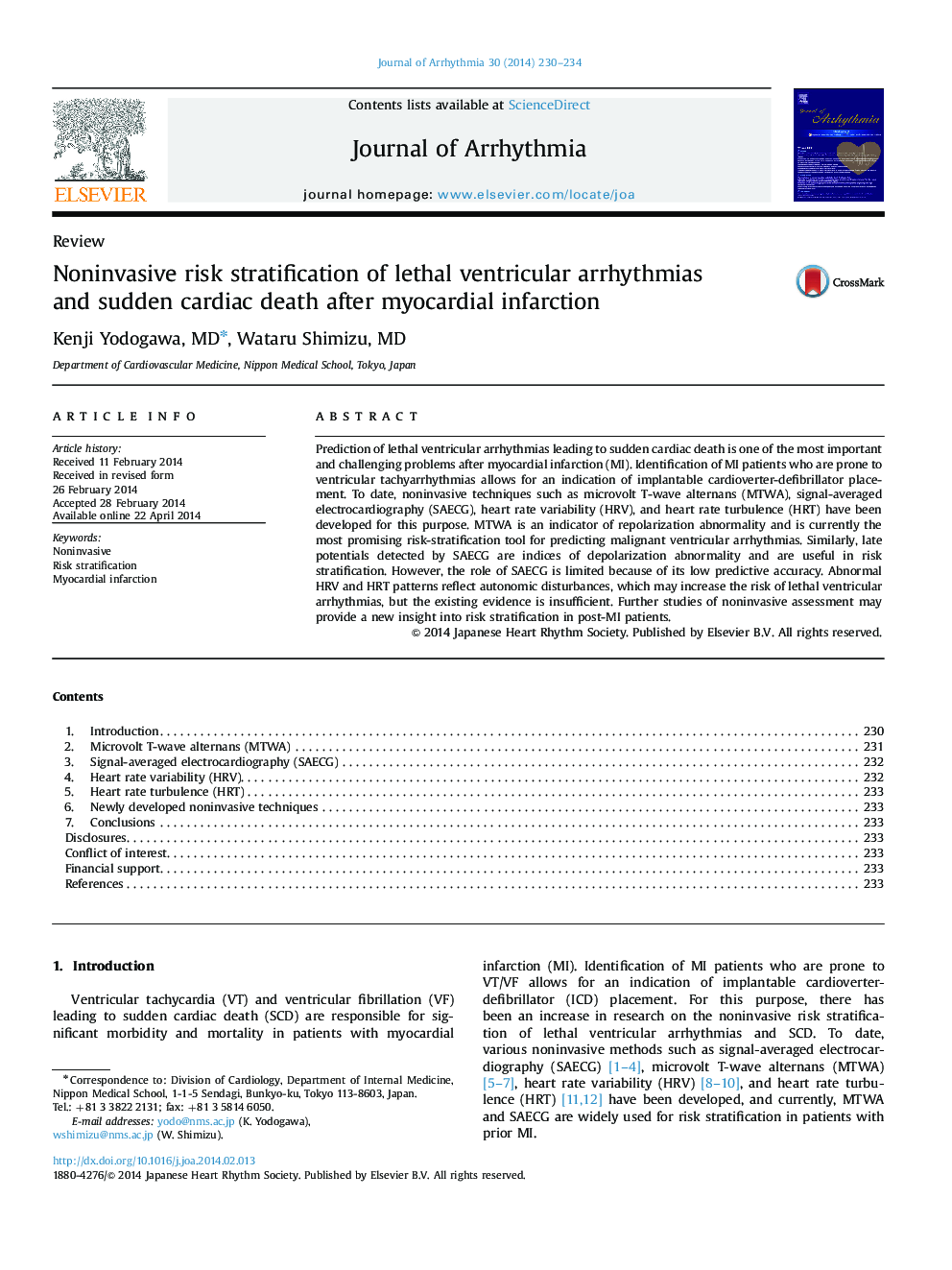| Article ID | Journal | Published Year | Pages | File Type |
|---|---|---|---|---|
| 2957707 | Journal of Arrhythmia | 2014 | 5 Pages |
Prediction of lethal ventricular arrhythmias leading to sudden cardiac death is one of the most important and challenging problems after myocardial infarction (MI). Identification of MI patients who are prone to ventricular tachyarrhythmias allows for an indication of implantable cardioverter-defibrillator placement. To date, noninvasive techniques such as microvolt T-wave alternans (MTWA), signal-averaged electrocardiography (SAECG), heart rate variability (HRV), and heart rate turbulence (HRT) have been developed for this purpose. MTWA is an indicator of repolarization abnormality and is currently the most promising risk-stratification tool for predicting malignant ventricular arrhythmias. Similarly, late potentials detected by SAECG are indices of depolarization abnormality and are useful in risk stratification. However, the role of SAECG is limited because of its low predictive accuracy. Abnormal HRV and HRT patterns reflect autonomic disturbances, which may increase the risk of lethal ventricular arrhythmias, but the existing evidence is insufficient. Further studies of noninvasive assessment may provide a new insight into risk stratification in post-MI patients.
